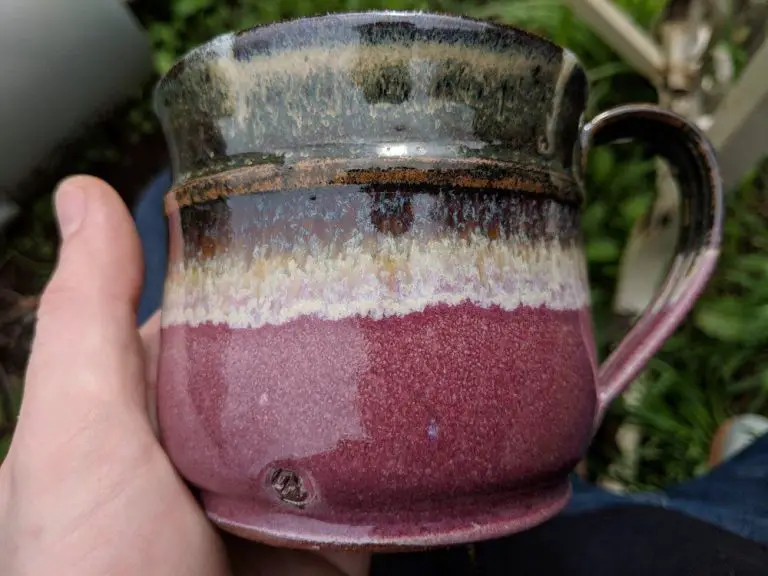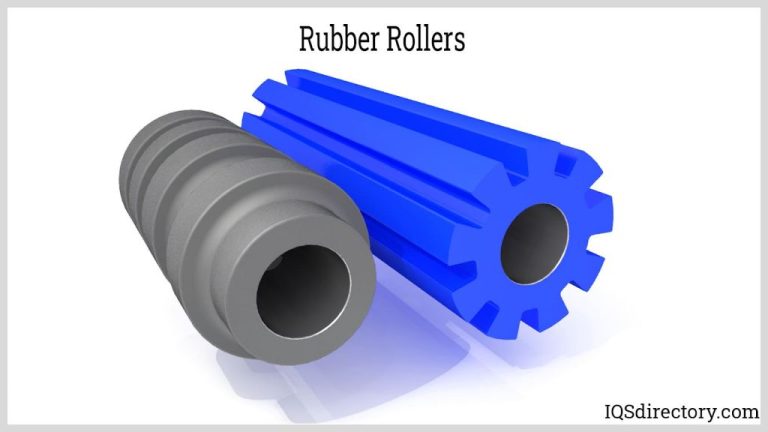How Is Clay Made In Nature?
Clay is a fine-grained natural material composed primarily of hydrated silicates of aluminum that is plastic when wet and hardens when dried or fired. It is one of the most abundant minerals on earth and has been used by humans for millennia to make pottery, ceramics, bricks, and other objects. Understanding how clay forms provides insights into geological processes and why clay has unique properties that make it so useful.
Clay forms over long periods through the chemical weathering and erosion of rocks. It involves a complex process of physical and chemical transformations that starts with the breakdown of rocks by water, air, plants, and chemicals. The resulting clay minerals are then transported downstream in rivers and streams before being deposited in lakes, deltas, beaches and oceans. Over time, burial and compaction alter the clay into the material we know today.
This article will provide an overview of the full process of how clay forms in nature, from the initial weathering of source rocks to the final deposition and diagenesis into clay minerals.
Definition of Clay
Technically, clay is a naturally occurring material composed primarily of fine-grained minerals, which is generally plastic at appropriate water contents and will harden with dried or fired. The particle size of clays is typically less than 0.002 mm, which classifies it as a fine-grained material.
There are a few key properties that distinguish clays from other fine-grained soils:
- Clays exhibit plasticity when mixed with water, meaning they can be molded into various shapes.
- Clays become hard when dried or fired.
- Clays swell or shrink when wetted or dried due to water absorption.
- Clays have very high specific surface areas due to the small size of the particles.
- Clays have high cation exchange capacities, meaning they can adsorb and release cations such as calcium and sodium.
These unique properties make clays an incredibly useful material for a wide variety of applications from pottery to medicines. The plasticity, hardening capabilities, and cation exchange capacity arise from the sheet-like crystalline structure of clay minerals.
Clay Minerals
The most common clay minerals include kaolinite, montmorillonite-smectite, illite, and chlorite. Clay minerals are hydrous aluminum phyllosilicates, sometimes with variable amounts of iron, magnesium, alkali metals, alkaline earths, and other cations.
The crystal structure of clay minerals is composed of silica tetrahedra and alumina octahedra. In kaolinite, silica tetrahedra and alumina octahedra share oxygen atoms. In smectite, the layers are imperfectly matched so that some oxygen atoms are not shared between layers. This gives smectite the ability to absorb water and expand its crystal structure. Illite has a similar layered structure but contains potassium cations which prevent water penetration and expansion. Chlorite has a more complex structure with brucite-like aluminum hydroxide sheets between silica tetrahedral layers.
The chemical composition and crystal structure of different clay minerals give rise to the unique physical properties that make them useful for a variety of applications.
Weathering of Rock
Rocks are broken down into smaller particles through processes known as weathering. There are two main types of weathering that contribute to clay formation – chemical weathering and physical weathering.
Chemical weathering involves chemical reactions that alter the minerals in rocks. Water is often the catalyst for these reactions. Some common chemical weathering processes include:
- Hydrolysis – ions in water react with rock minerals, changing their chemical composition.
- Oxidation – oxygen reacts with rock minerals, causing them to break down.
- Carbonation – carbon dioxide dissolves in water to form carbonic acid, which reacts with rock minerals.
- Hydration – water is absorbed into rock minerals, causing them to expand and break apart.
Physical weathering involves mechanical processes that physically break rocks into smaller pieces without changing their chemical composition. Some examples include:
- Freezing and thawing – water seeps into cracks, expands when frozen, then contracts when thawed, wedging the cracks apart.
- Thermal expansion – temperature changes cause rocks to expand and contract, leading to stresses that break bonds.
- Unloading – overlying materials are eroded away, decreasing pressure and allowing expansion.
- Crystal growth – growth of salt crystals or ice crystals can exert pressure that breaks rocks apart.
Both chemical and physical weathering processes are important in breaking down parent rock material into smaller particles and minerals that can eventually form clays.
Transport
Once rock has been broken down into finer particles through weathering, erosion transports these particles to new locations for deposition. Erosion occurs through the forces of wind, water, ice, and gravity. Rivers and streams are major transporters of eroded rock particles. As water flows downstream, it carries suspended sediment. Strong river currents grind down and smooth rock fragments as they collide during transport. Glaciers also carry large amounts of rocky debris as they flow slowly over land. The rocks frozen in the base and sides of the glacier scrape against the earth, picking up fragments. Wind transports sand-sized and smaller particles long distances through suspension in the air. Gravity moves rock debris down steep slopes in landslides, rockfalls, and avalanches. The constant forces of erosion and transport break down and relocate rock material over time.
Deposition
As the weathered particles are transported by wind, water, gravity or ice, they will eventually settle out and be deposited when the transporting agent loses energy and can no longer hold the particles in suspension. This typically occurs in areas like lakes, rivers, deltas, floodplains, beaches and deep ocean floors where the current slows down.
During deposition, the particles will naturally sort by size. Heavier larger particles will settle out first, while finer lighter particles like clay will remain in suspension longer and be carried farther before settling. This sorting process results in deposits with distinct layers and varying mineral compositions based on the size and density of the particles. Clay deposits often occur downstream or farther from the weathering source area.
Burial & Compaction
Continued deposition buries clay particles deep underground. Pressure squeezes out water and compresses the particles even closer together. Over long periods of time under pressure, the loosely bonded clay minerals recrystallize into tightly interlocking plates. The increased pressure re-orients the clay particles and presses out the water between them. This compaction removes porosity and creates a dense mass with a rock-like consistency.
Clay Formation
With time, temperature, and pressure, clay minerals form from other weathered minerals. As rocks break down into fine particles over long periods, the small clay particles recrystallize into layered clay minerals. The weathering process releases ions like potassium, sodium, calcium and magnesium into the environment. These ions can then combine with silicon ions released from quartz or silicates to form clay particles.
Clay minerals like kaolinite, montmorillonite and illite emerge through this chemical weathering process. The different clay minerals have unique properties based on their specific chemical composition and crystalline structure. As clay particles accumulate, the weight and pressure cause the particles to orient themselves in flat layers. Over geologic timescales, continued pressure compact the layers and expel water to create consolidated clay deposits.
The temperature during clay formation also impacts the resulting mineral. Montmorillonite forms in cool temperatures, while kaolinite forms in tropical or subtropical climates. High rainfall in tropical areas accelerates the leaching of ions that transforms minerals into clays. The ancient seafloors provided ideal conditions for large clay deposits to form through weathering and compaction processes over millions of years.
Uses of Clay
Clay has been utilized by humankind for thousands of years and continues to serve a variety of purposes in modern society. From pottery and sculpture to construction and engineering, clay’s unique properties make it an incredibly versatile material.
One of the oldest uses of clay is to make pottery items such as bowls, jars, cups, plates and figurines. Clay is an ideal material for pottery because it can be molded into shapes when wet, maintains its form when dried, and becomes hard and durable when fired in a kiln. Decorative glazes are often applied to pottery made of clay.
Clay is also used extensively in construction materials such as bricks, tiles and ceramic pipes. The building material adobe is made from clay combined with straw or sand. Clay bricks are durable, fire resistant, and effective thermal insulators.
In industry, clay is used for engineering and environmental applications. Drilling mud used in oil and gas wells contains clay which helps lubricate and stabilize the borehole. Clay liners and barriers are installed in landfills and other waste sites to contain pollution and prevent groundwater contamination.
Clay minerals are also used in a variety of everyday products. absorbents, paints, cosmetics, paper coatings, fertilizers Cat litter often contains clay for its absorbent properties. Even some medicines contain purified clay.
With its abundance in nature and array of unique properties, clay continues to be an indispensable material supporting human civilization.
Conclusion
The formation of clay is a natural process that begins with the weathering and breakdown of source rocks like granite. As these rocks are exposed to weathering processes like water, ice, wind, heat, and biological activity, the minerals within them begin to decompose and break down into finer particles. These clay minerals are then transported by water, ice, wind, and gravity to be deposited and accumulated in layers in basins, lakes, oceans, and other low-lying areas. Over long periods of time, these deposited clay sediments are buried and compacted under pressure, which transforms them into sedimentary rock layers of shale and claystone. Continued compaction, heating, and chemical changes with depth converts the clay minerals into mature clay deposits that can be mined for use.
The lengthy process of clay formation makes it a precious natural resource. Clay is an incredibly useful and versatile material due to its chemical and physical properties. It has a wide array of applications including pottery, ceramics, bricks, cement, paper, cosmetics, pharmaceuticals, drilling fluids, waste containment, and more. The unique properties of clay that lend it these varied uses include its fine grain size, sheet-like structure, plasticity when mixed with water, ability to absorb ions, and bonding with other minerals. Understanding the geological processes that create clay helps us locate clay deposits and utilize this resource sustainably.




